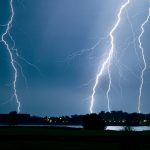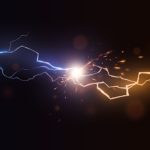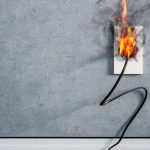Power Surge Safety
As storm season approaches, ensuring your home is well-prepared to withstand potential damage caused by severe weather conditions is crucial. Taking proactive measures to prepare your home’s electrical system from power surges is essential.
Typically, both ungrounded and properly grounded power outlets provide 120-volt AC power. However, the power flow can actually vary between 0 and 169 volts, and any amount exceeding 169 volts classifies as a power surge. Such surges may arise from different occurrences, including power grid switching and lightning strikes during thunderstorms, resulting in a sudden and excessive influx of electrical energy that can damage your appliances and electrical devices.
Power surges can cause damage to both devices and your home’s electrical system. The arc of electrical power can generate heat, damaging your electrical outlets and damaging your appliances. These electrical arcs can also fry your home’s circuit breaker, creating extensive and expensive damage that prolongs your power outage.
While significant power surges like those induced by direct lightning strikes can cause instant and permanent damage causing your appliances or electronics to stop working. Minor power surges, like the ones that happen when your air conditioner cycles on, can cause small but accumulating damage over time. Such surges can cause electronic rust, shortening the functional lifespan of any device by several years.
It is crucial to protect your devices and electrical system from power surges and to make sure your home’s wiring is up to code. This avoids costly damage to your appliances and enhances electrical safety, safeguards your electrical system, and ensures everything operates smoothly during storm season.
Unfortunately, you cannot prevent power surges. However, you can take measures to protect your home appliances and electronics. One effective strategy is to install surge protectors (also known as surge suppressors) in various locations throughout your home. Additionally, protective power strips are available. It’s worth noting that not all power strips are surge protectors. When shopping for surge protection, you’ll need to check the packaging for an energy rating in Joules. If no rating is present, the power strip most likely doesn’t have surge protection.
Another great way to protect your home from electrical hazards during storm season is to have an electrician install GFCI (ground fault circuit interrupter) outlets. These outlets shut off power automatically when detecting a ground fault, which protects against electrical shock and provides a higher level of electrical safety.
It’s essential to have some items readily available to prepare for power outages and blackouts. These may include candles or lanterns, flashlights, a portable radio, a portable charger, non-perishable food and water, a first aid kit, warm clothing, and blankets. These items can help you stay informed, safe, and comfortable during a power outage.





